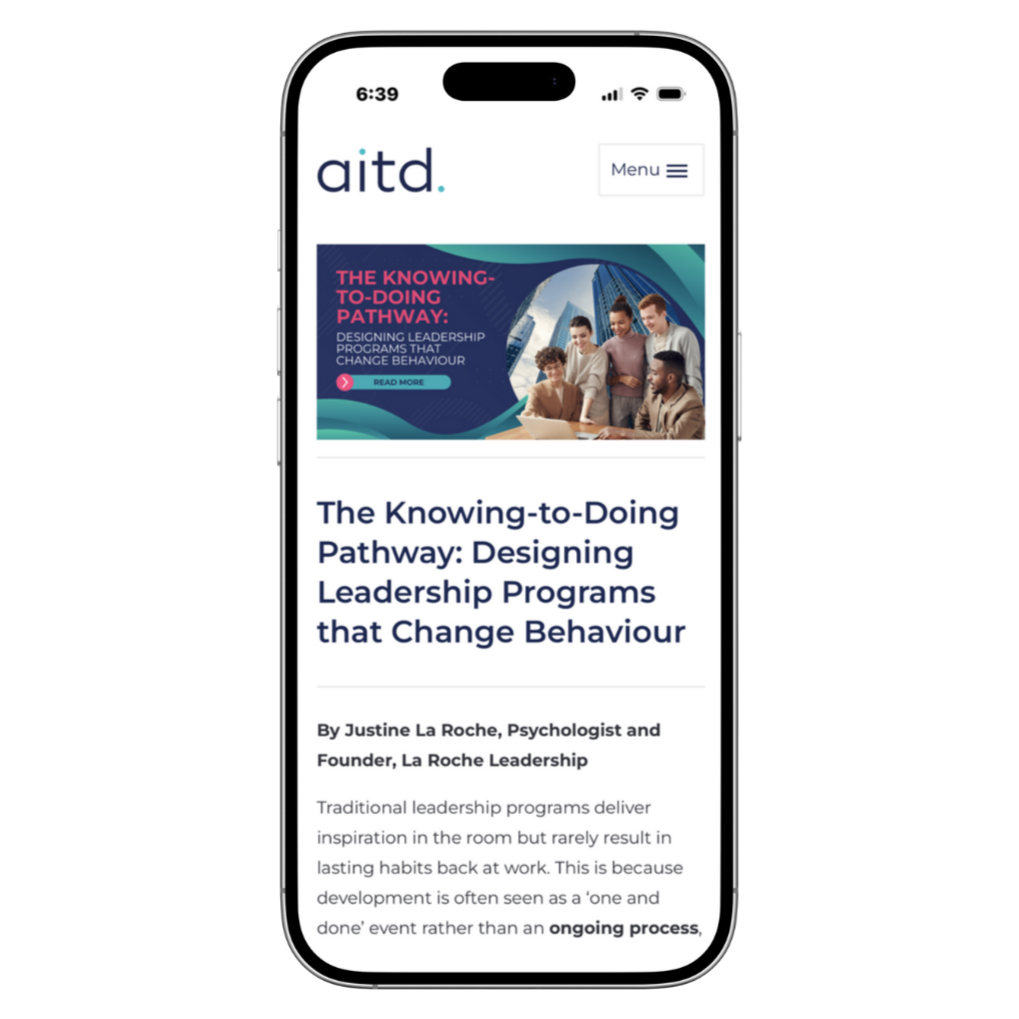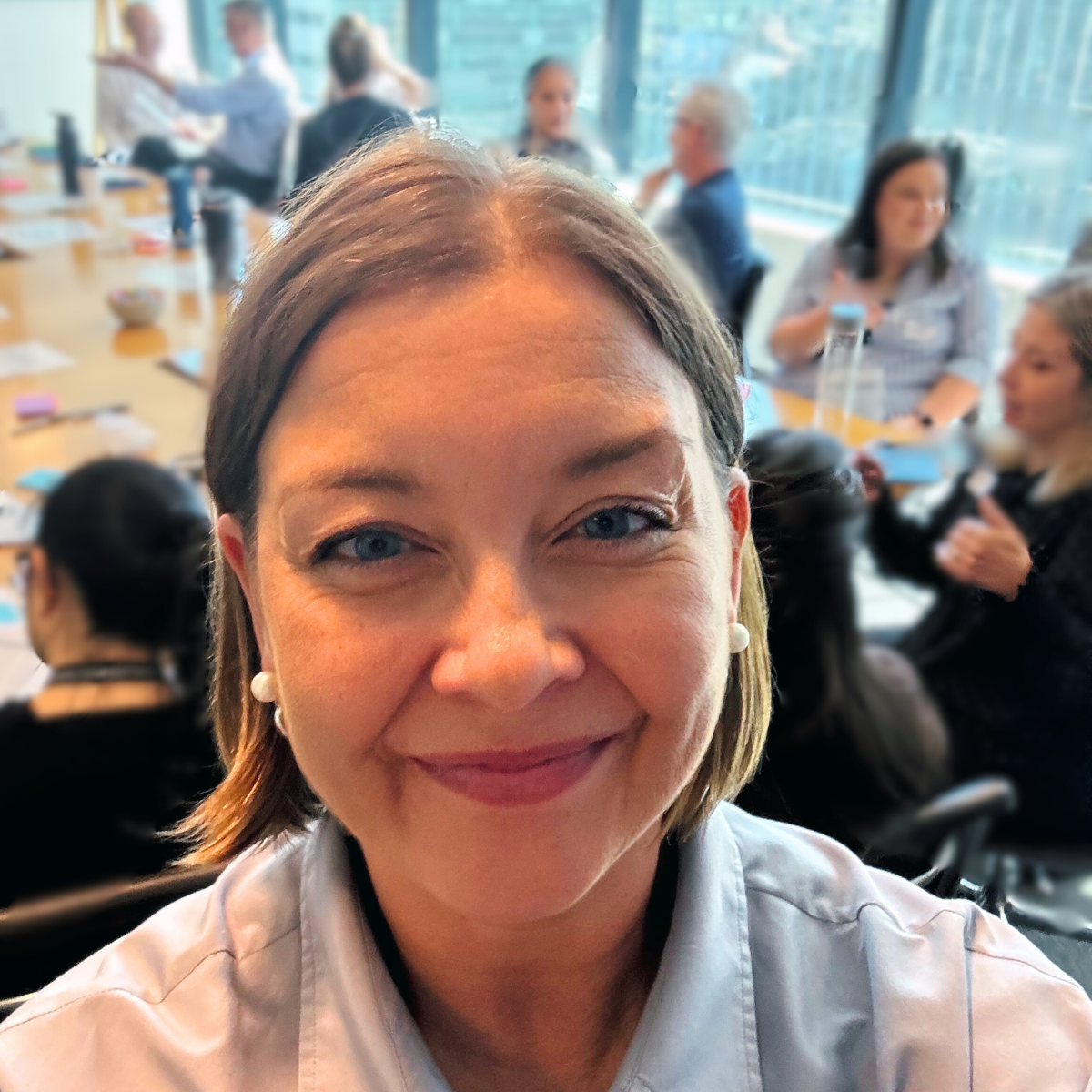
Leadership programs
Develop the leadership behaviours needed for success.
Programs, but not as you know them
We’ve been running leadership programs the same way for decades. The result? A cycle of short-term enthusiasm followed by long-term disappointment.
Traditional leadership programs deliver inspiration in the room but rarely result in lasting habits back at work. Their bounded, episodic nature means development is often seen as a one-off event rather than an ongoing process, resulting in gains that are typically superficial and short-lived.
The leadership programs I design and deliver are different.
Why?
They provide a pathway from knowing to doing.
Behaviour change doesn’t happen by chance; it happens by design.
The knowing-to-doing pathway™
My Knowing-to-Doing Pathway™ provides a design blueprint for leadership programs that aligns with recognised stages of change.
It’s based on the most widely applied model of behaviour change in the world, proposed by psychologists James Prochaska and Carlo DiClemente.
The five stages of their model (pre-contemplation, contemplation, preparation, action, and maintenance) can guide the design of leadership programs by shaping pathways that encourage leaders to move from knowing to doing step by step: Assess & Consider, Explore & Learn, Practice & Plan, Apply & Implement, and Reflect & Reinforce.
By aligning development activities with this logical flow, programs can better support leaders in progressing from insight to action and ultimately enhance leadership effectiveness.
As featured by the AITD
Head to the Australian Institute of Training & Development (AITD) website to read more about the Knowing-to-Doing Pathway™ and how it can assist you to design leadership programs that change behaviour.
A bespoke program, fast-tracked
It’s unfair to expect off-the-shelf programs with generic content to provide tailored development for your leaders.
We can create what you truly need by using the Knowing-to-Doing pathway to customise a unique development journey and then curating content that matches your goals from my versatile library of leadership topics.
Whether you’re building from scratch or enhancing what you already have, you can select engaging content across three levels: ME (Individual Leadership), WE (Team Leadership), and US (Organisational Leadership).
-
Foster self-awareness and have a growth mindset
Lead with your values and strengths
Be proactive and control your emotions
Establish and maintain healthy boundaries
Prioritise your time and energy for value-adding activities
-
Build trust and connection
Create positive operating rhythms
Promote wellbeing
Set expectations and hold people accountable
Empower others and delegate effectively
Coach and provide feedback
Develop others
Lead hybrid teams
-
Become a leader-of-leaders
Grow other leaders
Balance organisational tensions
Influence without authority
Communicate with impact
Facilitate collaborative conversations
Lead change
Have something in mind? Let’s design it together.
What good is an idea if you can’t use it?
Facilitation
Practical, down-to-earth, and engaging facilitation that leaders look forward to - not just sit through - with a focus on ideas they can implement straight away.
Your leaders don’t need another stuffy, lecture-style training. I bring energy, insight, and adaptability to each session, balancing interaction and reflection with the right level of challenge. Because I both design and facilitate your leadership program, every element can be moulded to your specific requirements.
You can customise a development experience through:
In-person or virtual delivery
Flexible formats e.g., workshops, webinars, conferences, Lunch ‘n’ Learns
Session lengths that align with operational needs
Modular program options that allow time for application and reflection
Integration strategies that embed development into existing rhythms, such as team meetings, monthly meetups, or quarterly reviews, rather than adding to leaders’ workloads.
Enquire now to customise a format, delivery style, and rhythm that works for your leaders.
Case studies













